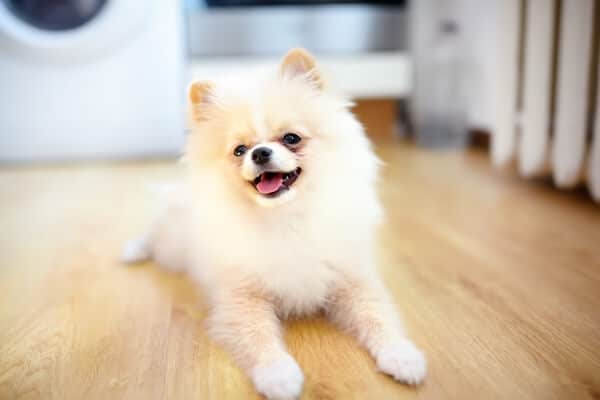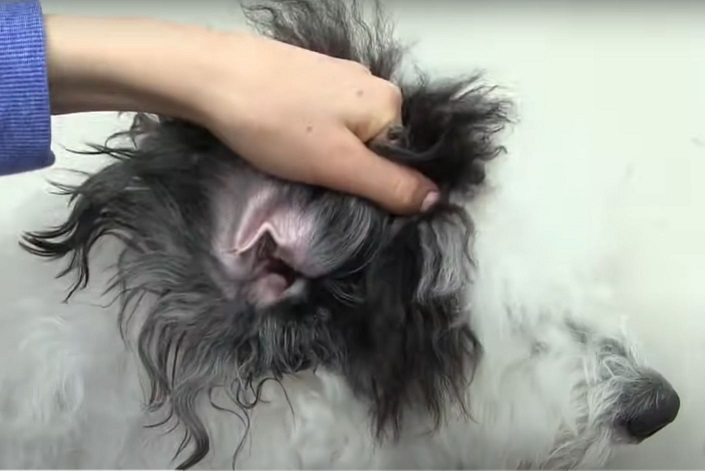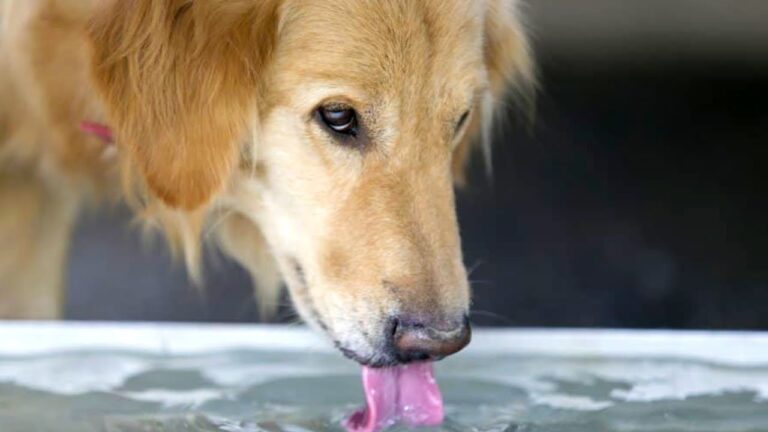How Long Can You Leave A 2 Month Old Puppy Alone? (What Experts Say)

Breeding dogs could be exciting, challenging, and equally time-consuming. As much as you would desire to spend time with your fur baby, this is not always possible due to work engagements and other responsibilities. This almost always leaves you with a pup deprived of attention, care, and companionship. Without further ado, how long can you leave a 2-month-old puppy alone?
Experts recommend that puppies at 2 months of age should not be left alone for longer than 1 hour. This is the length of time pups can hold their bladder. Also, as canines are naturally pack animals, lonesomeness may predispose them to separation anxiety.
Moreover, It’s imperative to know that some dog breeds tolerate loneliness better than others. So, if you have a limited time to spare for your four-legged friend, certain dog breeds may not be right for you, even at the adult stage of their life. Funnily enough, you’ll be looking at independent couch potatoes, and away from high-energy dogs.
Regardless, at an early stage, all dogs would require a great deal of devotion and care. Even while you are away for a reasonable period, it’s a good idea to crate train them or leave them in a puppy-proof room with fresh, clean water too.
Jump to Section
How Long Is Too Long To Leave A 2-month-old Puppy Alone?
The period for which a 2-month-old puppy can be left alone can vary depending on several factors, such as breed, temperament, and training. However, there are general guidelines that can help you determine an appropriate time frame.
New puppies, especially those under 10 weeks old, are unable to control their bladder for more than an hour. As such, leaving a 2-month-old puppy (approximately 8 weeks old) alone for an extended period is not advisable due to their frequent need to urinate. When puppies reach 10-12 weeks old, they can usually hold their bladder for around two hours, but this still necessitates frequent check-ins and bathroom breaks.
From ages 3-6 months, a general rule of thumb is to avoid leaving puppies alone for a duration exceeding their age in months. For example, a 3-month-old puppy should not be left alone for more than three hours. This guideline gradually extends the timeframe until the puppy reaches six months of age, at which point they can typically hold their bladder for up to six hours.
However, even when your dog is fully grown, it should not be left alone for more than six to eight hours without an opportunity for a bathroom break. Longer durations can lead to discomforts and potential health issues, such as urinary tract infections, stones, or crystals.
It’s important to remember that these are general guidelines and individual dogs may have different needs. Every dog is unique, and factors such as breed, emotional state, and personal habits can affect their ability to be alone. Consistent training and attention can help your puppy adapt to periods of being alone, but these should be introduced gradually and with care.
Moreover, beyond just the physical needs, puppies at this age are in a critical socialization period, and they also need emotional interaction and stimulation. Therefore, it’s essential to ensure your puppy is getting plenty of interaction, playtime, and love. If you must leave your puppy alone, consider arranging for a pet sitter or trusted friend to check in on your puppy and provide the needed attention and care.
What happens if you leave a 2-month-old puppy alone for too long?
Leaving a 2-month-old puppy alone for too long can lead to various negative outcomes, primarily due to their physical needs and their social nature. Puppies at this age need frequent feeding and bathroom breaks, and extended periods alone can lead to discomfort, accidents, and potential health issues.
On an emotional level, puppies are in a critical socialization period, requiring plenty of interaction and stimulation. Dogs are inherently social animals, and some breeds are particularly energetic or prone to certain behaviors when left alone. For instance, breeds like Huskies or Australian Shepherds may become overly active or even destructive without enough companionship.
Prolonged isolation can result in a condition known as separation anxiety, a behavioral disorder that manifests as disruptive and often destructive behaviors when the dog is left alone. Symptoms of separation anxiety can include excessive vocalization, destructive behaviors such as chewing furniture or scratching doors, and house soiling. In severe cases, dogs with separation anxiety might refuse to eat or drink and attempt to escape their confinement, risking injury to themselves or damage to their surroundings.
It’s crucial to differentiate between normal distress behaviors due to isolation and separation anxiety, which is a more severe and chronic condition requiring professional intervention. While isolation distress can usually be managed with appropriate training and gradually increasing alone time, separation anxiety often necessitates specialized training techniques or even veterinary intervention.
Fortunately, there are several strategies to help manage and prevent these problems. Creating a “puppy zone” with safe and stimulating chew toys can provide entertainment and reduce destructive behavior. Regular exercise and socialization with other dogs and humans are also vital for a puppy’s development and happiness. These activities help reduce their energy levels, stimulate their minds, and foster healthy social behaviors.
If you find it challenging to be present all the time, consider seeking assistance from a pet sitter, dog walker, or trusted friend to help care for your puppy during your absence. Consistent training, attention, and care can significantly reduce the risks of negative outcomes from leaving your puppy alone for extended periods. However, remember that the key is to leave your puppy alone gradually and ensure they’re comfortable before leaving them alone for longer durations.
How long can you leave a 2-month-old puppy alone in a crate?
Crate training takes advantage of the dog’s natural instincts to seek out a comfortable, quiet, and safe place when the surrounding environment is too loud or overwhelming. It could be an excellent tool when done correctly and could be an initial procedure during housetraining. However, a crate is not a magic wand for common canine behaviors. If used wrongly can make the pups feel trapped and create separation anxiety. Therefore, the crate should be used with caution.
Introduce the pup into the crate slowly, and create playtime in and around the crate with treats. Gradually increase the time until they build confidence or adjusted. Because of their frequent urge for voiding, 2-month-old puppies should not be kept in a crate for more than an hour. They may not be able to get enough exercise or human interaction and can become frustrated or depressed besides crate is only a short-term solution
Training Your 2 month-old puppy to Be Alone
Whether it’s due to work commitments or other responsibilities, the goal is to train your furbaby to be comfortable and safe without you. It’s akin to teaching a young child that it’s okay to spend time in their room while the parents are gone for a while. Begin by setting up a designated space for your puppy, such as a crate or a puppy pen. Ensure it’s comfortable, safe, and inviting – a place they can associate with rest and positivity.
Once they’re familiar with their designated space, start practicing short periods of separation. Encourage your puppy to go into their space, close the door, and step away. At first, these separations should be brief, only about 5-10 minutes. It’s like you’re telling your puppy, “I’m stepping out briefly, but I’ll be back soon.”
Gradually, extend these periods of separation. Consistency is crucial here; use the same cue words each time, and aim to increase the alone time progressively. When returning to your puppy, keep your demeanor calm. This approach ensures they don’t associate your return with heightened excitement or stress.
The goal is to foster a sense of security in your puppy when they’re alone and reinforce the idea that your departure is not a cause for anxiety. If your puppy is struggling with this training despite your best efforts, it’s advisable to consult with a professional dog trainer to support you and your puppy through this process. Remember, patience and consistency are the keys to successful training.
Ways To Ensure Your Puppy Is Safe When You Are Away
Leaving your furbaby at home alone while at work is no fun for your pooch. A lot could go wrong but to avoid having to feel guilty of leaving your furry companion, below are some ways to ensure your puppies are safe and happy.
1. Arrange A Safe Space For the Dog
Creating a conducive and safe environment (space) for your dog while away could help reduce stress and anxiety and also prevent boredom and destructive behaviors. This could include providing a comfy bed, interactive/safe chew toys, a supply of clean water, and making sure the space is free from any form of hazard.
2. Provide Him With Plenty Of Exercise
Apart from feeding and potty breaks, your puppies need a lot of exercise and sleep time. Exercise helps them to burn calories, for food digestion, stimulates their mind, and keeps them in a happy mood. It also helps them to avoid boredom and it’s induced destructive behaviors and separation anxiety.
The intensity and frequency of the exercise could be varied depending on the dog’s breed and its energy levels. Ensure at least a 20-minute play session or a brisk walk with your furbaby before leaving the house. This could tire them out and they may not even notice when you leave. They could sleep through most of the day as well.
3. Keep Him Busy With Fun Toys and Treats.
A bored pooch can easily become depressed since its biggest source of fun and entertainment isn’t around or is busy chasing the bag or other things. Providing the best calming treats and favorite or interactive chew toys could help beat boredom.
Using marrow bone and other healthy, edible chew toys or frozen treats. Other items can include hard rubber toys with holes and crevices, woven toys with knotted ends, etc. It’s important not to leave your pooch with any item with a potential choking hazard
4. Use An Interactive Dog Cam
Investing in an interactive dog camera can be a valuable tool for monitoring your puppy when you’re away. It provides real-time footage of your pet, reassuring you that they’re safe. It’s like having a virtual window into their world when you can’t be physically present.
Moreover, this technology can help identify behavioral issues. For example, if your puppy exhibits signs of separation anxiety, a dog camera will allow you to catch these early signs. Some cameras even have two-way audio and treat dispensers, adding interactive elements that can comfort and entertain your pup.
However, it’s important to remember that technology can’t replace physical care and attention. Puppies, especially those as young as 2 months old, require considerable care and shouldn’t be left alone for extended periods. Ensure their needs are being met first and foremost.
5. Develop A Routine For Your Pooch
Creating a routine could help reduce stress and anxiety in your pooch while you are away by providing a sense of predictability and security. It helps your pups to understand their roles and responsibilities which can promote a feeling of security and well-being.
Certain routines include a consistent schedule for meals, potty break times, and exercises. With consistent physical and mental stimulation and appropriate rewards, this could install the necessary discipline required for your pooch when you leave them alone.
6. Hire A Dog Sitter
This is one of the beneficial ways to keep your puppies company while you are away. They cater to the needs of the dogs ranging from feeding, potty breaks, and administering medication to supervising regular physical activities and socializations which helps to reduce stress and anxiety. Make sure to do your background checks before hiring a dog sitter
7. Consider Doggy Daycare Or Boarding
This is another good option for busy pet parents. Like child daycare, they come with the promise of watching over your pup all day, ensuring their needs are met. In addition, they provide your furbaby the opportunity to increase their socialization skills.
Keep in mind that not all pups are suitable for daycare. Make sure your puppies have no behavioral issues that could be exacerbated by the doggy daycare. Finally, be sure to research the doggy daycare, and read reviews and recommendations if possible.
Also Read: What happens if a 6 month old dog pregnant? (Explained!)
Can You Leave A 2-Month-Old Puppy While At Work?
Working full-time or even part-time means leaving your pup all alone while at work. Leaving your dog is not a bad idea as it could teach them the skills of being independent. Most times it’s for how long they can be left alone which becomes a puzzling question for many a pet parent.
Since your 2-month-old puppy needs frequent toilet breaks and stimulation of company, it will be unfair to leave them alone while at work. So what do you do in this situation? You need to get help which can include, popping home in your break time, calling a friend or neighbor, employing a dog sitter, leaving your pup with a friend, or even doggy daycare. Remember, this stage of their life is very demanding and it’s not forever.
Can I leave my 2-month-old puppy alone overnight?
Puppies of this age can only be left alone for short periods whether it’s midnight or daytime. There are several reasons for this including the fact that their bladder is not fully matured to hold containers for longer periods without needing a toilet, they could be missing their mom and littermates as they get into their new homes, etc.
Leaving your puppy for a short period at midnight should be in a safe, secure, and comfortable environment like in a crate or a puppy-proof zone. The crate should be free from toys, water, or food, and ensure to switch off the lights.
Final Thoughts
Raising a two-month-old puppy brings joy and challenges in equal measure, especially for full-time working parents. Balancing time constraints and the puppy’s needs can seem like a complex puzzle, yet with proper training, consistent routines, and positive reinforcement, your new pet will adjust to its home environment more seamlessly than you might think.
Understanding that every puppy has its unique pace of growth and adjustment is essential. Some may require more time and patience to adapt to new situations and schedules. Just as each human is different, so too are our canine companions. This uniqueness should be celebrated, not seen as a cause for concern. However, remember that despite their innate capacity for learning and adaptation, puppies at this age require frequent care and attention. Leaving them alone for extended periods may not be the best approach.
Puppies are like babies; they require regular feeding, stimulation, and bathroom breaks. Generally, a good rule of thumb for a 2-month-old puppy is to limit alone time to a maximum of 2 hours during the day. Beyond this, they can become anxious or engage in destructive behaviors, and their housetraining can be negatively impacted.
To navigate around this issue, consider options like puppy daycare, hiring a pet sitter, or even bringing your puppy to work if your workplace allows it. If these are not feasible, try to create an environment where your puppy feels safe and entertained when alone. This can include a comfortable crate, toys for stimulation, and puppy pads for bathroom needs.
Remember, while it may seem challenging at first, both you and your puppy are on a journey of learning and bonding. Training a puppy requires patience, dedication, and, most importantly, an understanding of your pet’s needs. It’s not so much about there being “untrainable dogs” as it is about learning the right methods and techniques to guide them effectively. The value of these efforts will be repaid in a well-behaved and happy pet who enriches your life with boundless joy and companionship.
If your 2-month-old puppy bites you, this post explains why it happens and whether it’s harmful.
Read related posts about





